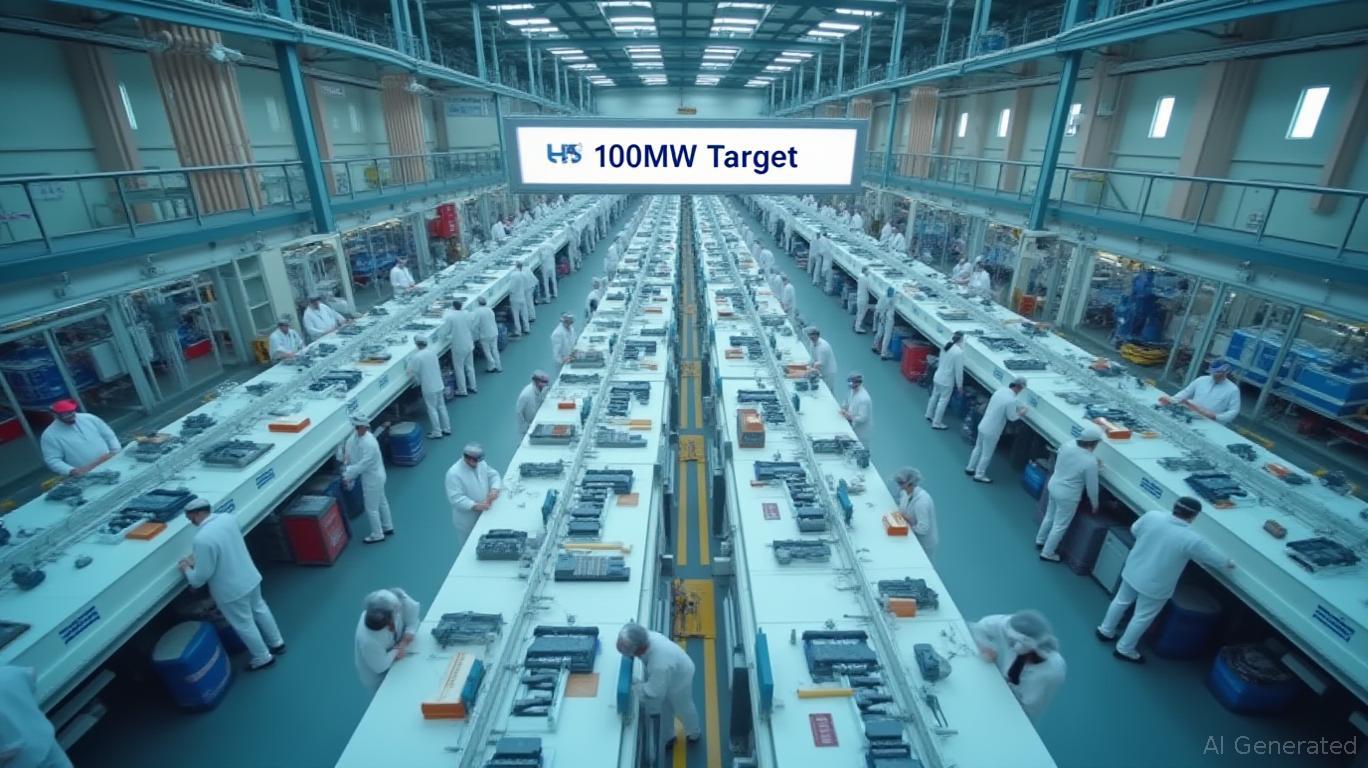FuelCell Energy: Navigating Near-Term Struggles to Capture Green Energy's Future
Amid a landscape of rising investor skepticism toward clean energy firms,
(FCEL) is positioning itself as a paradox: a company still battling profitability yet teetering on the edge of a transformative inflection point. With its restructuring efforts, backlog expansion, and strategic bets on AI data centers and carbon capture, the company's trajectory hinges on executing a delicate balancing act—reducing costs while scaling production to meet surging demand for sustainable infrastructure.The Financial Tightrope
FuelCell's first quarter of fiscal 2025 underscored both progress and persistent challenges. Revenue rose 14% year-over-year to $19.0 million, driven by contributions from its Gyeonggi Green Energy (GGE) service agreement and collaborations like ExxonMobil's carbon capture projects. Yet, the company remains in the red, reporting a net loss of $32.4 million and cash burn that reduced liquidity to $270.7 million—a drop from $318 million just three months prior.

The critical metric for investors is Adjusted EBITDA, which improved 28% to $(21.1) million—a sign of progress but still far from profitability. Management has set a clear milestone: hitting 100MW annual production capacity at its Torrington plant would theoretically flip EBITDA to positive. However, current output stands at just 31MW, with production constrained by a restructuring that prioritized cost-cutting over expansion.
The Restructuring Gamble
The company's November 2024 restructuring—laid off 13% of its workforce and cut operating costs by 15%—has bought time but risks stifling growth. By focusing resources on core carbonate fuel cell technology and pausing less mature projects like solid oxide electrolysis, FuelCell aims to avoid the overextension that plagued peers like Bloom Energy.
The trade-off? Slower production ramp-up. The Torrington plant's annualized 31MW output is less than a third of the target, leaving execution risks. A delayed shipment or unexpected cost overrun could delay the EBITDA turnaround indefinitely.
Market Opportunities: Betting on Grid Resilience and AI
FuelCell's greatest advantage lies in its strategic alignment with megatrends:
1. AI Data Centers: Partnerships with Diversified Energy and TESIAC to develop low-emission power solutions for hyperscale data centers are a goldmine. As cloud infrastructure demands cleaner energy, FuelCell's modular, reliable fuel cells—capable of 24/7 operation—are a natural fit.
2. Grid Resilience: The Hartford PPA ($167.4M backlog contribution) and U.S. government contracts reflect a growing need for decentralized energy systems. With extreme weather events increasing, utilities are prioritizing distributed generation.
3. Carbon Capture: ExxonMobil's joint development deal positions FuelCell to monetize its carbon capture technology, a critical component of net-zero goals.
The Risk-Reward Equation
Investors face a stark calculus:
- Upside: If FuelCell can ramp Torrington production to 100MW by 2026, its backlog ($1.31 billion as of Q1) could convert into recurring revenue, turning losses into profits. A single 58.8MW project in Korea (part of the GGE deal) alone represents over three years of current revenue.
- Downside: Cash burn ($47.3 million in Q1) must be curtailed. Share sales—already diluting ownership—could intensify if liquidity falls below $200 million. Production delays or project cancellations (e.g., if the Hartford PPA stalls) would exacerbate losses.
Investment Thesis
FuelCell Energy is a high-risk, high-reward bet for investors with a 3–5 year horizon. The stock's volatility (down 30% YTD despite financial improvements) reflects skepticism about execution. However, the strategic clarity—focusing on profitable service agreements and scaling core tech—is a positive sign.
Recommendation:
- Hold for now. Wait for clarity on Torrington's production ramp-up and signs of cash burn deceleration.
- Buy if the company achieves 50MW annualized output by end-2025, signaling progress toward the 100MW goal.
- Avoid if liquidity drops below $250 million or partnerships (e.g., with Malaysia Marine) falter.
However, historical performance of timing the stock around earnings underscores the risks. A backtest of buying FCEL five days before each quarterly earnings announcement and holding for 20 trading days from 2020 to 2025 resulted in a -90.75% return, with a maximum drawdown of 95.62%. This strategy underperformed the benchmark, yielding a negative CAGR of -35.94% and a Sharpe ratio of -0.77, highlighting the poor risk-reward profile of such short-term trades. These findings reinforce the importance of a long-term perspective, as volatility around earnings events can amplify losses.
Conclusion
FuelCell Energy is not a company for the faint-hearted. Its path to profitability requires flawless execution on production, project delivery, and cost discipline. Yet, with a backlog brimming with long-term contracts and a focus on markets with no easy alternatives (data centers, carbon capture), it's a stock worth watching. The question remains: Can FuelCell navigate the near-term storm to claim its place in the green energy sunrise? The answer rests on that elusive 100MW milestone.

Comments
No comments yet